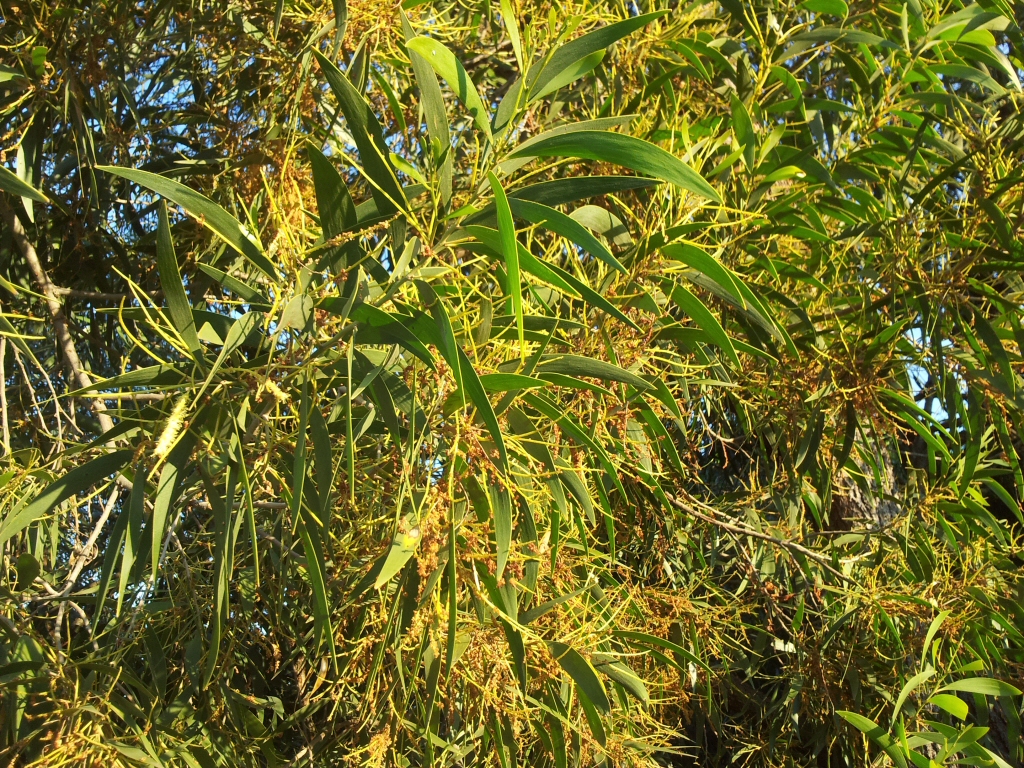This Acacia grows to a small or medium tree, and flowers quite abundantly with rod-shaped flowers appearing from late summer to mid-winter. It grows naturally in open forest and can also be found in rainforest where it can grow significantly higher. Not seen so much in cultivation, it is nonetheless a useful forest or screening tree and produces timber that can be used in cabinet work and for a variety of other purposes.
The roots also fix nitrogen in soil, making it a great plant for reforestation of poor soils.
There are also two interesting varieties:
var. macrocarpa Benth. – occurs in Qld and NT, flowers very prolifically.
var. fruticosa C. T. White – smaller and more shrub-like, it can be found on slopes of the Glasshouse Mountains in Qld at approximately 300m altitude, and bears rich orange-coloured flowers in early autumn.


